
10 wind-resistant trees
Gusts, squalls, and other strong winds had better watch out for our selection.
Contents
All trees naturally sway in the wind. It may be surprising to learn that this repeated swaying changes the way the tree grows. Over time, the tree may become stunted or develop smaller leaves. This ability to slowly change shape and structure in response to the wind is known as thigmomorphogenesis.

Tree sculpted by the wind (Photo: Klaus)
The wind also has detrimental effects. On one hand, it removes moisture from the foliage, creating an imbalance for the plant. This is particularly true for conifers in winter. The soil around the plant dries out more quickly with the wind. And of course, a particularly strong wind can tear off leaves and break branches, or even completely uproot the plant.
Some trees are particularly adapted to strong winds due to deep rooting, rapid growth, or an adapted shape.
Quickly discover our selection of ten wind-resistant trees.
Plane tree
The plane tree or Platanus acerifolia, although drought-tolerant, enjoys moisture and thrives near watercourses. Its large leaves (which gave it its name: from the Greek “platos” meaning wide) make it a natural provider of shade. Its straight trunk can reach an impressive diameter as the tree ages; its lifespan is estimated to be up to 1000 years. Resistant to urban pollution and climatic hazards (drought, gusts, severe frosts). It is the tree of our parks and gardens.
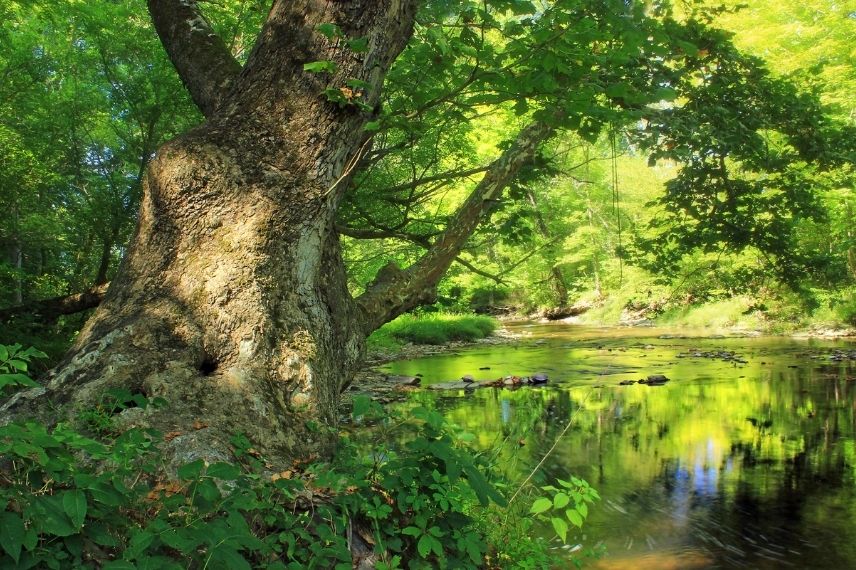
The plane tree grows naturally along watercourses
Read also
10 wind-resistant shrubsThe hackberry
The hackberry or Celtis australis is a majestic tree that can reach a spectacular height, protecting it from the assaults of the wind. It is the sacred tree of the southern Celts (hence its name “celtis”). The Provence hackberry (Celtis australis) is an elegant tree with tender green deciduous leaves. As it develops, it takes on a rounded and spreading habit and can grow to heights of 15 to 25 m and widths of 8 to 10 m. In cooler regions, it forms a small tree. It is currently used as a street tree in the South. It is also an excellent shade tree. A very resilient tree, it easily withstands pollution in large cities.
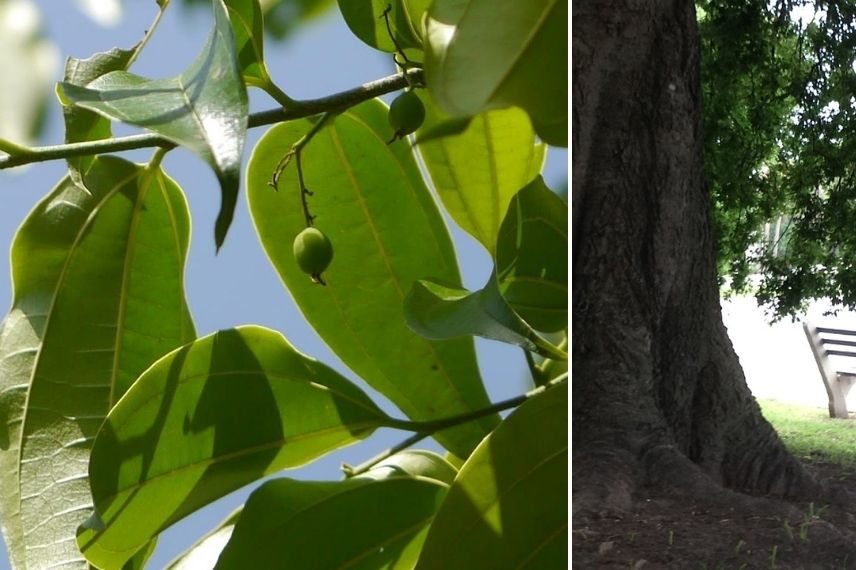
Fruits and leaves of the hackberry, its grey smooth bark has an elephantine quality with its powerful buttresses anchoring it firmly in the soil
Discover other Trees and large shrubs
View all →Available in 0 sizes
Available in 1 sizes
Available in 1 sizes
Available in 1 sizes
Available in 1 sizes
Available in 1 sizes
Available in 2 sizes
Available in 1 sizes
Available in 1 sizes
Available in 1 sizes
Cypress
The cypress Cupressus sempervirens, is the tree of the Mistral in Provence, immortalised by Van Gogh. With its narrow and slender silhouette, this tree, reaching 15 to 20 m in height, lines the roads and monuments of the Mediterranean basin. This species thrives in isolation in full sun but requires deep, rich, and cool soil. Cupressus sempervirens ‘Totem’, Italian or Tuscan cypress, is a medium-sized evergreen conifer with a columnar habit. This cypress is moderately hardy north of the Loire but tolerates sea winds, drought, and heat.
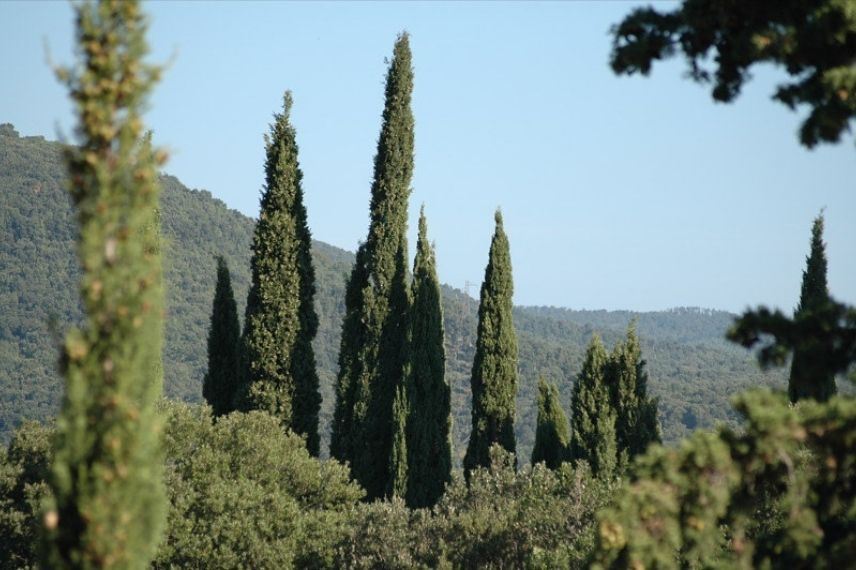
Children of the Mistral, the cypress trees shape the landscapes of southern gardens.
Read also
How and why to create a windbreak hedge?Pine
Pines or Pinus in Latin are conifers with a characteristic and picturesque silhouette. Their very deep root system allows them to withstand bad weather well. The Maritime Pine, Pinus pinaster, commonly known as the Landes Pine, has a trunk covered with very rough grey to red bark. It features an irregular crown, visible from afar. This tree first develops a deep root to resist wind uplift, followed by numerous shallow running roots. The Stone Pine Pinus pinea is a tree of warm climates, well adapted to drought and sea spray, perfect for a large seaside garden. It can adapt as far as the Paris region in a sheltered position. The Stone Pine is resistant to sea spray and drought. It also extends into the southwest, and almost up to the Loire.

Characteristic silhouettes of seaside landscapes: on the left, the umbrella pine of the Mediterranean, on the right, the maritime pine or Landes pine
The evergreen oak
The holm oak, Quercus ilex or holm oak is native to the Mediterranean. It isa large evergreen tree, with a straight trunk and a wide dome-shaped crown almost down to the ground. It can reach 20 m in height and 18 m in width. Its leathery foliage, dark green on top and silvery grey underneath, remains throughout the year. The Quercus ilex prefers calcareous soil, and certainly not overly moist soil. It withstands the salty winds from the sea. Young trees should be somewhat sheltered from the cold easterly winds.

The holm oak, an evergreen tree, withstands sea spray and finds its place by the seaside
The charm
Hornbeam Carpinus betulus is a very hardy and low-maintenance tree, adapting to any sufficiently deep soil, even calcareous and occasionally dry. It is most often used in hedges, whether trimmed or free, as a windbreak. It reaches heights of 10 to 15 m and adopts a columnar shape in its youth, then a slender conical silhouette of 5 to 8 m wide.

The common hornbeam has a very ramified natural habit from its base to filter the wind.
White poplar
Poplar Populus alba ‘Nivea‘, White Poplar, Silver Poplar or Maple-leaved Poplar is a robust tree of medium size. The young shoots and the young leaves are of remarkable whiteness, which gives the tree, in the wind, a shiny and silver effect. The foliage takes on a golden hue in autumn. This poplar, with its very compact and ramified habit, withstands strong winds, salt spray, and tolerates limestone. It is the ideal tree for creating windbreak hedges.
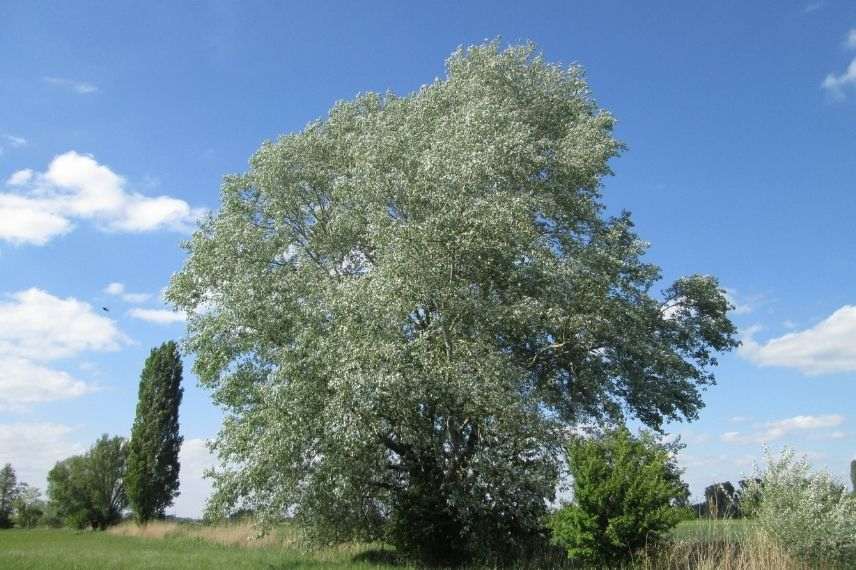 Poplar, tree for open spaces
Poplar, tree for open spaces
Ornamental cherry trees
Prunus or ornamental cherry trees are remarkable bushes known for their spring flowering and decorative bark. The Prunus glandulosa ‘Rosea Plena’ is a charming little bush with an upright, highly floriferous habit that adorns itself with a profusion of pretty pompoms, pastel pink, in spring.
Very hardy, it withstands temperatures down to -15 °C. This flowering cherry can be planted solitarily, in a small garden, or in a free-standing hedge. The Prunus glandulosa ‘alba plena’, is a compact bush, with a remarkable pure white flowering in May.
The Prunus subhirtella autumnalis is the autumn flowering cherry. Its flowering semi-double, pink in bud, then white, sometimes blooms as early as November, on its naked branches.

Autumn flowering of the prunus subhirtella ‘autumnalis Rosea’. On the right: ornamental cherry tree with an upright habit suitable for winds once well established
To learn all about these superb bushes, discover our complete file: “Japanese Cherry Trees: planting, pruning and caring for”
The black birch
The black birch Betula nigra is an elegant and graceful tree with soft green foliage that turns golden yellow in autumn. It is a very hardy and low-maintenance tree that reaches heights of 10 to 15 m. Give it an open location as a specimen tree or in coppice within a windbreak hedge. Its reddish to yellow-brown bark exhibits significant peeling, eventually turning black over the years. As a result, the black birch is particularly decorative when young.

Its almost weeping habit looks wonderful as a specimen in large spaces
The verrucate birch
The birch Betula pendula, white birch or verrucate birch is a remarkably stable tree in windy conditions, even in waterlogged soil. It is frequently found on poor riverbank soils or in parks and gardens where its majestic silhouette is a delight. This very undemanding tree is elegant, with its silver-white bark turning black as it ages. Standing 15 to 18 metres tall, this narrow tree with a rounded crown withstands frosts perfectly.
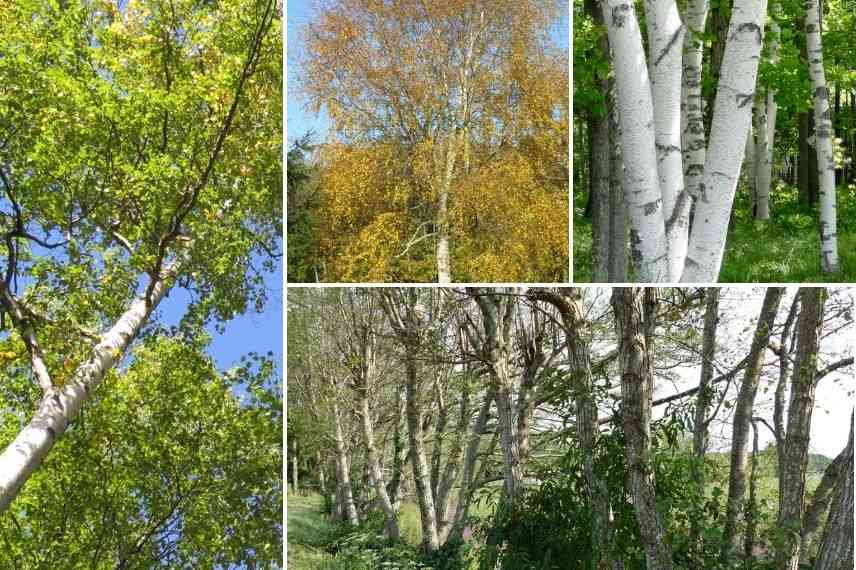 With its elegant foliage dancing in the wind, it will find its place in any natural or modern garden, in the city as well as in the countryside.
With its elegant foliage dancing in the wind, it will find its place in any natural or modern garden, in the city as well as in the countryside.
- Subscribe!
- Contents
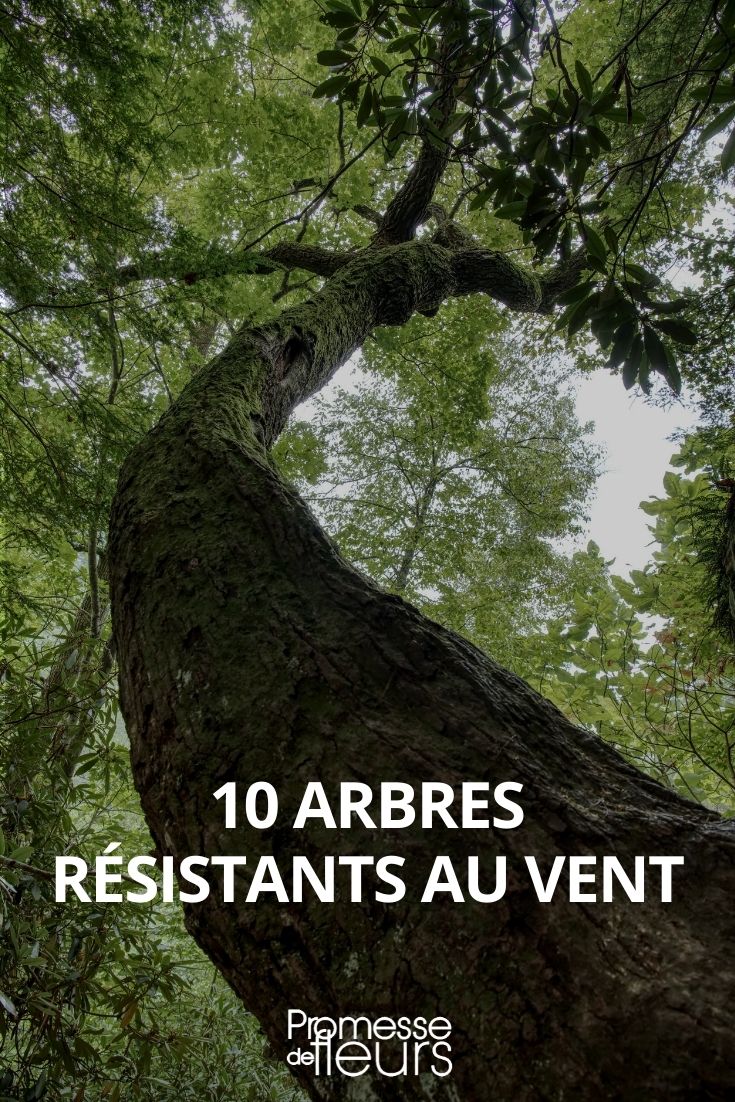





































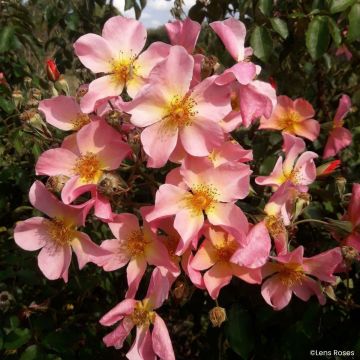

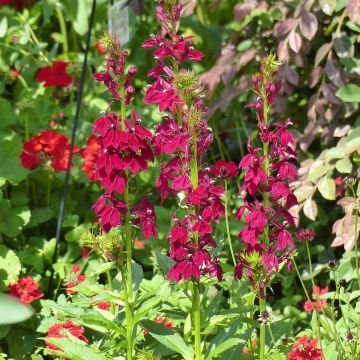

Comments